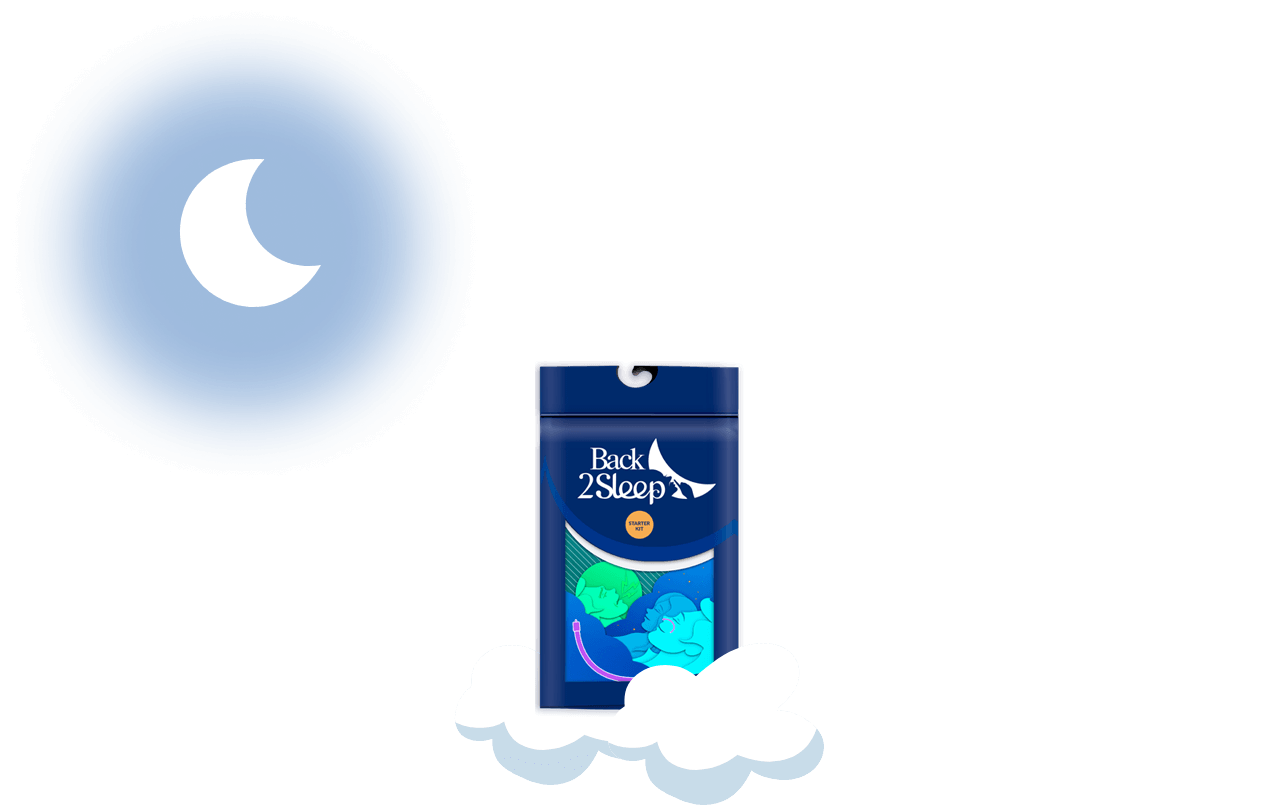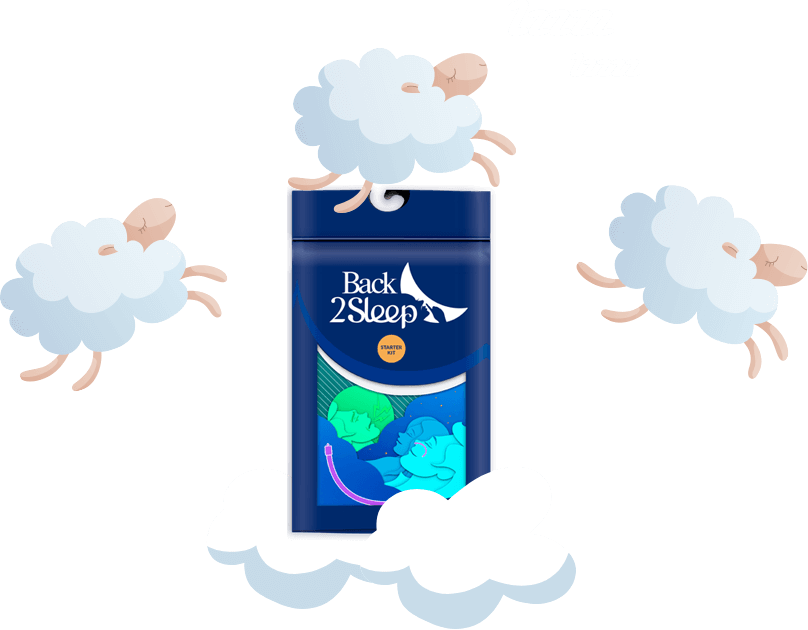Chronic Rhinitis: Symptoms, Causes, and Cutting-Edge Treatment Solutions
Comprehensive guide to understanding, diagnosing, and effectively treating chronic rhinitis with proven medical approaches and innovative therapies
Chronic rhinitis affects over 400 million people worldwide, causing persistent nasal inflammation that drastically impacts quality of life through relentless symptoms of nasal congestion, runny nose, sneezing, and facial discomfort. Unlike temporary rhinitis from colds or flu, this long-lasting condition persists for at least 12 weeks and requires comprehensive medical management. Whether triggered by allergies, environmental factors, or unknown causes, chronic rhinitis significantly disrupts sleep, reduces productivity, and costs billions in healthcare expenses annually. This definitive guide explores the various types of chronic rhinitis, identifies root causes, examines diagnostic approaches, and details both traditional and innovative treatment options including medications, lifestyle modifications, and advanced procedures that provide lasting relief from this debilitating condition.

Staggering Statistics: Chronic rhinitis affects 10-30% of adults in the United States, contributing to 6 million lost work days, 28 million restricted work days, and productivity losses of $600 per employee annually. Direct medical costs reached $11.2 billion in 2005 and continue rising.
The Global Burden: Understanding Chronic Rhinitis by the Numbers
Rhinitis represents one of the most common chronic diseases globally, yet remains dramatically underdiagnosed and undertreated. Regional prevalence varies significantly, ranging from as low as 1% in certain populations to 63% in others, with median rates of 18.1% for allergic rhinitis and 12% for nonallergic subtypes. Beyond statistics, the human impact is profound—62% of patients report chronic rhinitis significantly affects daily life, while nearly 80% experience sleep difficulties leading to daytime fatigue and reduced cognitive function.
The economic burden extends far beyond medical expenses. In the United States alone, rhinitis costs exceeded those of diabetes, coronary heart disease, and asthma combined, with productivity losses manifesting as decreased work performance, increased absenteeism, and diminished quality of life. Children with allergic sensitization face additional challenges including lower exam scores during peak pollen seasons, higher rates of ADHD diagnoses, and impaired athletic performance.
What Exactly Is Chronic Rhinitis? Defining This Complex Condition
Chronic rhinitis describes persistent inflammation of the nasal mucosa—the delicate tissue lining your nasal passages. Unlike acute rhinitis caused by temporary infections like the common cold, chronic rhinitis endures for at least 12 consecutive weeks, often persisting for months or even years without proper intervention.
Distinguishing Chronic from Acute Rhinitis
Understanding the fundamental differences between acute and chronic rhinitis is crucial for appropriate treatment:
| Characteristic | Acute Rhinitis | Chronic Rhinitis |
|---|---|---|
| Duration | 1-2 weeks typically | 12+ weeks minimum |
| Primary Causes | Viral or bacterial infections | Allergies, environmental triggers, unknown factors |
| Resolution | Self-limiting or antibiotics | Requires ongoing management |
| Symptom Pattern | Temporary, progressive improvement | Persistent or fluctuating |
| Associated Fever | Often present | Rarely present |

The Eight Types of Chronic Rhinitis: Identifying Your Specific Condition
Chronic rhinitis encompasses multiple distinct subtypes, each with unique characteristics, triggers, and treatment approaches. Accurate classification is essential for effective management, as treatments vary significantly between types.
🌸 Allergic Rhinitis
The most common type, triggered by allergens like pollen, dust mites, pet dander, or mold. IgE-mediated immune response causes histamine release and characteristic symptoms.
🌡️ Nonallergic Rhinitis (Vasomotor)
Symptoms without allergic cause, often triggered by weather changes, strong odors, irritants, or stress. Blood vessel expansion in nasal passages causes congestion.
🍽️ Gustatory Rhinitis
Runny nose triggered specifically by eating, particularly spicy or hot foods. Neurological response causes immediate nasal discharge during meals.
💊 Drug-Induced Rhinitis
Caused by medications including blood pressure drugs, antidepressants, or overuse of nasal decongestant sprays (rhinitis medicamentosa).
Mixed Rhinitis: Studies reveal that up to 34% of chronic rhinitis patients actually have "mixed rhinitis"—experiencing both allergic and nonallergic components simultaneously. This overlap requires comprehensive treatment addressing multiple mechanisms.
Recognizing Chronic Rhinitis: Complete Symptom Profile
The hallmark symptom of chronic rhinitis is persistent nasal congestion—the constant feeling of a "stuffy nose" that makes you want to blow your nose continuously, yet little mucus emerges. This occurs because congestion stems from swollen, inflamed nasal passages rather than mucus accumulation.
Primary Nasal Symptoms
Secondary and Associated Symptoms
Chronic rhinitis frequently causes symptoms beyond the nose itself:
Post-nasal drip creates the persistent sensation of mucus dripping down the back of your throat, leading to constant throat clearing, chronic cough (especially at night), and that characteristic "itchy throat" feeling that never quite resolves.
Loss of smell (hyposmia or anosmia) significantly diminishes quality of life. When nasal passages remain chronically inflamed and congested, odor molecules cannot reach olfactory receptors. This subsequently reduces your sense of taste, making eating and drinking less enjoyable and potentially affecting nutrition.
Facial pressure and headaches develop from sinus pressure and inflammation. Many patients experience dull, persistent headaches, pressure around the eyes, cheeks, and forehead, and pain that worsens when bending forward.

Sleep and Systemic Impact
Critical Sleep Connection: Nearly 80% of chronic rhinitis patients report significant sleep disturbances. Nasal congestion forces mouth breathing during sleep, disrupting normal breathing patterns, causing frequent awakenings, and resulting in profound daytime fatigue, irritability, and decreased cognitive performance.
The systemic effects extend to mood disturbances, decreased productivity at work or school, social embarrassment from constant nose-blowing and sniffling, and reduced participation in physical activities. Children particularly suffer with behavioral changes resembling ADHD, lowered self-esteem, and difficulties with concentration and learning.
Root Causes of Chronic Rhinitis: What Triggers This Condition?
Understanding the underlying causes of your chronic rhinitis is the first crucial step toward effective treatment. Multiple factors contribute to this condition, often working in combination.
Allergic Triggers: The IgE-Mediated Response
In allergic rhinitis, exposure to specific allergens triggers an immune system overreaction. Your body produces immunoglobulin E (IgE) antibodies against these substances, causing mast cells to release histamine and other inflammatory chemicals that create rhinitis symptoms.
🌳 Seasonal Allergens
Tree pollen (spring), grass pollen (late spring/summer), and weed pollen (late summer/fall) trigger symptoms during specific times of year.
🏠 Perennial Allergens
Dust mites, pet dander, cockroach debris, and indoor mold cause year-round symptoms with no seasonal variation.
🍄 Mold Spores
Both indoor and outdoor fungi release spores that can trigger symptoms seasonally or year-round depending on location and environment.
💼 Occupational Exposures
Workplace allergens including latex, flour, wood dust, and various chemicals trigger symptoms in susceptible individuals.
Nonallergic Triggers and Risk Factors
Nonallergic rhinitis involves nasal blood vessel expansion and neurological responses without IgE involvement:
Anatomical and Structural Factors
Physical abnormalities predispose individuals to chronic rhinitis by obstructing normal nasal airflow:
Deviated septum—the wall dividing nasal passages tilts to one side—restricts airflow and promotes chronic inflammation. Nasal polyps, noncancerous growths resulting from chronic inflammation, further block airways and perpetuate symptoms. Enlarged turbinates (structures inside the nose that warm and humidify air) contribute to obstruction, while anatomical variations like narrow nasal passages increase susceptibility.
Protective Factors Discovered: Research from the European Community Respiratory Health Study reveals that early childhood exposure to siblings, pets, and farm environments significantly reduces chronic rhinitis risk throughout life. The "hygiene hypothesis" suggests early immune system training provides lasting protection.
Diagnosing Chronic Rhinitis: Comprehensive Evaluation Approaches
Accurate diagnosis requires distinguishing chronic rhinitis from other conditions with similar symptoms, identifying the specific rhinitis subtype, and uncovering underlying triggers. This multi-faceted approach ensures targeted, effective treatment.
Initial Clinical Assessment
Your healthcare provider begins with a thorough medical history, exploring:
Symptom Timeline
Duration, frequency, and patterns of symptoms—seasonal versus year-round, time-of-day variations, and triggering circumstances.
Trigger Identification
Environmental exposures, occupational hazards, medication use, dietary factors, and stress levels that correlate with symptom onset.
Family History
Genetic predisposition to allergies, asthma, eczema (atopic triad), and similar conditions in blood relatives.
Impact Assessment
Effects on sleep quality, daily activities, work or school performance, and overall quality of life measures.
Physical Examination Techniques
A comprehensive nasal and throat examination reveals visible signs of chronic rhinitis:
Anterior rhinoscopy allows direct visualization of the nasal cavity using a light and speculum. Physicians look for swollen, pale or bluish turbinates (indicating allergic rhinitis), red, inflamed mucosa (suggesting infection or irritation), visible polyps or masses, and septal deviation affecting airflow.
Nasal endoscopy provides superior visualization. A thin, flexible camera (endoscope) passes through the nostrils, enabling detailed examination of deeper nasal structures, posterior nasal passages, adenoids (in children), and sinus openings.
Allergy Testing: Identifying Specific Triggers
| Test Type | Procedure | Advantages | Limitations |
|---|---|---|---|
| Skin Prick Testing | Small allergen amounts applied to forearm/back skin via tiny pricks | Rapid results (15-20 min), inexpensive, tests multiple allergens simultaneously | Requires stopping antihistamines beforehand, possible false positives |
| Specific IgE Blood Test | Blood sample analyzed for allergen-specific IgE antibodies (RAST/ImmunoCAP) | No medication restrictions, useful when skin testing inappropriate | More expensive, delayed results (days), slightly less sensitive |
| Nasal Provocation | Allergen directly applied to nasal mucosa under controlled conditions | Confirms clinical relevance of positive skin/blood tests | Specialized equipment needed, not widely available |
Advanced Diagnostic Procedures
Imaging studies help identify structural abnormalities and complications:
Computed Tomography (CT) scans of the sinuses provide detailed images revealing sinus inflammation, nasal polyps, septal deviation severity, and anatomical variations. CT scanning is particularly valuable when surgical intervention is being considered or chronic sinusitis complicates rhinitis.
Nasal cytology involves collecting nasal secretions or scrapings to examine under a microscope. This specialized test identifies nonallergic rhinitis with eosinophilia syndrome (NARES), where high eosinophil levels appear despite negative allergy tests, helping distinguish between rhinitis subtypes when diagnosis remains unclear.
Diagnosis of Exclusion: Nonallergic rhinitis is often diagnosed by ruling out allergic causes through negative allergy testing. However, modern understanding recognizes that many patients experience symptoms in response to defined triggers even without IgE sensitization, making clinical history equally important.
Comprehensive Treatment Approaches: From Medications to Innovative Procedures
Effective chronic rhinitis management combines multiple therapeutic strategies tailored to your specific rhinitis type, symptom severity, and treatment goals. Modern approaches range from first-line medications to cutting-edge interventional procedures.

First-Line Pharmacological Treatments
💨 Intranasal Corticosteroids
The gold standard for both allergic and nonallergic rhinitis. Reduce inflammation, decrease nasal congestion, and improve multiple symptoms with minimal side effects.
💊 Oral Antihistamines
Block histamine release from mast cells, effectively treating allergic rhinitis. Newer-generation antihistamines (cetirizine, loratadine, fexofenadine) avoid sedation.
🌬️ Intranasal Antihistamines
Azelastine and olopatadine spray directly into nasal passages, providing rapid relief with anti-inflammatory effects beyond antihistamine action alone.
🚿 Saline Nasal Irrigation
Regular nasal rinsing with saline solution mechanically removes allergens, mucus, and irritants while moisturizing nasal tissues—safe and effective for all types.
Additional Medication Options
Rhinitis Medicamentosa Warning: Overuse of nasal decongestant sprays beyond 5 days causes rebound congestion—a vicious cycle where worsening congestion requires more medication. This drug-induced rhinitis necessitates gradual withdrawal and alternative treatments. Never exceed recommended duration!
Immunotherapy: Modifying the Allergic Response
For allergic rhinitis, allergen immunotherapy represents the only treatment that can modify the underlying disease course rather than merely controlling symptoms. This involves gradual exposure to increasing allergen doses, retraining the immune system to tolerate these substances.
Subcutaneous immunotherapy (SCIT)—traditional "allergy shots"—involves regular injections (typically weekly during buildup, then monthly for maintenance) over 3-5 years. Studies demonstrate significant symptom reduction, decreased medication needs, and prevention of new allergies and asthma development. However, treatment requires multiple clinic visits and carries small risk of severe allergic reactions.
Sublingual immunotherapy (SLIT) offers a convenient alternative. Allergen tablets or drops dissolve under the tongue daily at home after initial supervised dose. SLIT provides comparable efficacy with improved safety profile and convenience, though treatment duration remains similar at 3+ years for lasting benefits.
Explore Nasal SolutionsBreakthrough Procedures: Advanced Interventional Treatments
When medications provide insufficient relief, innovative minimally invasive procedures offer dramatic symptom improvement with lasting results. These cutting-edge treatments target the underlying mechanisms of chronic rhinitis through various approaches.
Temperature-Controlled Radiofrequency (RhinAer)
The RhinAer system uses temperature-controlled radiofrequency energy to treat the posterior nasal nerve—the nerve responsible for triggering rhinorrhea and congestion. This in-office procedure takes approximately 30 minutes under local anesthesia.
Device monitors tissue temperature and automatically adjusts radiofrequency current to maintain precisely 60°C—the optimal treatment temperature—preventing tissue damage while effectively ablating nerve tissue.
Prospective multicenter trials demonstrate 30% decrease in total nasal symptom scores at 3 months, with continued improvement through 12+ months. No serious adverse events reported in clinical studies.
Patients return to normal activities immediately after the procedure with minimal downtime or discomfort.
Cryotherapy (ClariFix)
ClariFix cryotherapy takes the opposite approach—using extreme cold instead of heat. During this innovative outpatient procedure, liquid nitrogen at -196°C is applied to posterior nasal nerve tissue through an endoscope.
The cryogenic freeze interrupts nerve signals that cause excessive nasal discharge, congestion, and post-nasal drip. Treatment duration is approximately 30 minutes with immediate return to regular activities. Patients report symptom relief lasting one year or longer, with the procedure repeatable if symptoms eventually return.
Botulinum Toxin Injections
Botulinum toxin (BTX) demonstrates potential in treating vasomotor rhinitis through its anticholinergic effects. BTX inhibits acetylcholine release from nerve endings, reducing glandular secretions and potentially decreasing rhinorrhea. While not FDA-approved for rhinitis, off-label use shows promise for short-term relief in select patients who fail conventional therapies.
Surgical Interventions for Structural Problems
When anatomical abnormalities perpetuate chronic rhinitis, surgical correction addresses root causes:
Clinical Validation: Houston Methodist researchers demonstrated that temperature-controlled radiofrequency neurolysis significantly reduces rhinorrhea and congestion with excellent safety profile. Follow-up data confirms sustained effectiveness for at least 24 months post-procedure, offering hope for medication-refractory cases.
Environmental Control and Lifestyle Modifications: Essential Foundation of Management
Reducing allergen and irritant exposure forms the cornerstone of chronic rhinitis management, often reducing medication requirements and improving overall symptom control. Comprehensive environmental interventions target multiple exposure routes simultaneously.
Bedroom Optimization: Your Allergy-Safe Haven
Since we spend approximately one-third of our lives sleeping, bedroom allergen control provides maximum impact:
🛏️ Bedding Protection
Encase mattresses, box springs, and pillows in allergen-proof covers with pores smaller than 10 microns. Wash bedding weekly in hot water (130°F+) to eliminate dust mites.
🧹 Flooring Choices
Replace carpeting with hardwood, tile, or laminate flooring. If carpets remain, vacuum twice weekly with HEPA-filter equipped machines and professionally clean quarterly.
🚫 Pet Exclusion
Keep pets out of bedrooms entirely. If living with pets, bathe them weekly, use HEPA air purifiers, and vacuum furniture frequently with appropriate attachments.
💨 Humidity Control
Maintain indoor humidity between 30-50% using dehumidifiers or air conditioners to inhibit dust mite and mold growth without causing excessive dryness.
Whole-Home Allergen Reduction Strategies
Indoor air quality improvements benefit all household members:
Outdoor Allergen Avoidance
During peak pollen seasons, strategic behaviors minimize exposure:
Monitor local pollen counts through weather services and allergy apps. Stay indoors when counts peak—typically on dry, windy mornings. Plan outdoor activities for after rain when pollen is washed from air. Shower and wash hair before bed to remove pollen accumulated during the day. Keep car windows closed while driving and use recirculation mode for air conditioning.
Irritant Avoidance and Lifestyle Factors
Tobacco Smoke Elimination: Smoking and secondhand smoke exposure significantly worsen chronic rhinitis. If you smoke, cessation represents the single most important lifestyle modification. Avoid all tobacco products including e-cigarettes and heated tobacco products, which increase rhinitis risk in adolescents by substantial margins.
Additional irritant reduction: Choose fragrance-free cleaning products, personal care items, and laundry detergents. Avoid strong perfumes and colognes. Minimize exposure to paint fumes, chemical vapors, and air pollution. Use protective equipment if occupational exposures are unavoidable.
Stress management and adequate sleep support immune function and reduce symptom severity. Practice relaxation techniques, maintain consistent sleep schedules, and address underlying sleep disorders that may exacerbate rhinitis symptoms.
Potential Complications: Why Treating Chronic Rhinitis Matters
Untreated chronic rhinitis extends beyond nasal symptoms, potentially causing serious secondary health problems that significantly impact quality of life and generate additional healthcare costs.
😴 Sleep Disorders
Nasal obstruction forces mouth breathing, fragmenting sleep architecture, worsening sleep apnea, causing chronic fatigue, and impairing daytime cognitive function.
🦠 Chronic Sinusitis
Persistent nasal inflammation blocks sinus drainage, creating ideal conditions for bacterial growth and recurrent sinus infections requiring antibiotics.
👂 Middle Ear Problems
Eustachian tube dysfunction from chronic inflammation causes fluid buildup (otitis media with effusion), hearing impairment, and speech delays in children.
🫁 Asthma Complications
The "united airway" concept: rhinitis and asthma frequently coexist, with poorly controlled rhinitis worsening asthma symptoms, increasing exacerbations, and raising treatment costs.
Nasal polyps develop in some patients with chronic rhinitis, particularly those with aspirin-exacerbated respiratory disease. These noncancerous growths further obstruct airways, diminish smell, and require surgical removal when medical management fails.
Quality of life impacts accumulate over time: missed work or school days (6 million work days lost annually in the US alone), decreased productivity while present at work or school ("presenteeism"), social embarrassment and reduced social participation, impaired athletic and physical activity performance, and mood disturbances including anxiety and depression.
The Economic Toll: Beyond the $11.2 billion in direct medical costs, chronic rhinitis generates massive indirect costs through lost productivity ($600 per employee yearly), decreased work performance, and impaired quality of life. The total burden exceeds that of diabetes and coronary heart disease combined.
Living Well with Chronic Rhinitis: Practical Daily Management
While chronic rhinitis requires ongoing attention, effective self-management strategies enable most patients to control symptoms and maintain excellent quality of life. Success requires consistent application of multiple complementary approaches.
Daily Medication Adherence
The most common treatment failure results from inconsistent medication use rather than treatment ineffectiveness. Intranasal corticosteroids, for example, require regular daily use for 2-4 weeks before achieving full efficacy. Stopping medication when symptoms improve inevitably leads to symptom recurrence.
Strategies for improving adherence: Establish medication routine linked to existing daily habits (brushing teeth, morning coffee). Use smartphone reminders or medication tracking apps. Keep medications visible in frequently accessed locations. Address concerns about side effects with your healthcare provider rather than discontinuing treatment independently.
Trigger Tracking and Avoidance
Maintaining a symptom diary helps identify personal triggers and patterns. Record daily symptom severity, medication use, weather conditions, activities, locations, and potential exposures. Over time, patterns emerge revealing specific triggers you can then strategically avoid.
Nasal Care Routine
Regular nasal irrigation with saline solution provides multiple benefits: mechanically removes allergens and mucus, moisturizes dry nasal tissues, reduces inflammation, and enhances medication effectiveness when performed before applying medicated nasal sprays.
Proper technique matters: Use distilled, sterile, or previously boiled water—never tap water due to infection risk. Follow neti pot or squeeze bottle instructions carefully. Lean forward over sink, breathe through mouth, and allow solution to drain completely. Clean and dry irrigation device after each use.
When to Seek Medical Attention
Prognosis with Treatment: With proper diagnosis and comprehensive management, the vast majority of chronic rhinitis patients achieve excellent symptom control and quality of life. While cure may not be possible for all types, effective symptom management enables normal daily activities, restful sleep, and overall well-being.
Special Considerations: Chronic Rhinitis in Children and Pregnancy
Pediatric Chronic Rhinitis
Children experience unique challenges with chronic rhinitis affecting growth, development, behavior, and academic performance. Early recognition and treatment prevent long-term complications.
Behavioral and developmental impacts: Children with allergic rhinitis show higher rates of ADHD-like symptoms—not because of actual attention deficit disorder, but due to chronic sleep disruption and fatigue. Academic performance suffers with lower test scores during peak pollen seasons. Social and emotional development may be affected, with increased anxiety and reduced self-esteem.
Physical consequences include chronic mouth breathing leading to adenoid facies (characteristic facial appearance), dental malocclusion requiring orthodontic treatment, and increased risk of middle ear infections potentially causing speech delays.
Treatment considerations: Many medications have age restrictions. Intranasal corticosteroids show excellent safety profiles in children with appropriate dosing. Allergen immunotherapy can begin as young as age 5 in select cases. Addressing enlarged adenoids or tonsils surgically resolves symptoms in many pediatric cases.
Rhinitis During Pregnancy
Pregnancy rhinitis affects up to 30% of pregnant women, caused by hormonal changes, increased blood volume, and elevated estrogen levels causing nasal tissue swelling. Symptoms typically emerge during the second month, persist throughout pregnancy, and resolve within 2 weeks postpartum.
Management challenges arise from medication safety concerns during pregnancy. Safe treatment options include saline nasal irrigation (completely safe), select intranasal corticosteroids (Category B—budesonide preferred), and limited use of older antihistamines (chlorpheniramine, diphenhydramine) when necessary. Decongestants should generally be avoided, particularly during the first trimester.
The importance of treatment extends beyond comfort—untreated rhinitis during pregnancy can worsen sleep-disordered breathing, potentially affecting maternal and fetal outcomes. Discuss all treatment options with your obstetrician before initiating therapy.
Taking Control: Your Path Forward with Chronic Rhinitis
Chronic rhinitis need not control your life. While this persistent condition affects 400 million people worldwide and generates substantial healthcare costs, modern medicine offers numerous effective treatment options ranging from simple lifestyle modifications to innovative interventional procedures.
The key to successful management lies in accurate diagnosis of your specific rhinitis type, comprehensive treatment combining medications with environmental control, consistent adherence to therapeutic plans, and regular follow-up with healthcare providers to adjust treatment as needed.
Don't suffer in silence. If persistent nasal symptoms significantly impact your sleep, daily activities, or quality of life, seek evaluation from a qualified healthcare provider. Whether your rhinitis stems from allergies, environmental irritants, or unknown causes, effective solutions exist to help you breathe easier, sleep better, and reclaim your well-being.
Next Steps: Begin by tracking your symptoms and potential triggers for 1-2 weeks. Schedule an appointment with an allergist, ENT specialist, or your primary care physician. Come prepared with questions about diagnostic testing and treatment options. Remember that finding the optimal treatment regimen may require patience and adjustments, but relief is achievable.

Ready to Breathe Freely Again?
Explore innovative nasal breathing solutions that have helped over 1 million people worldwide achieve better sleep and nasal health.
Discover Back2Sleep Solutions✓ Clinically proven ✓ Easy to use ✓ Trusted by healthcare professionals
Continue Your Journey to Better Breathing
Explore more resources about nasal health, sleep quality, and respiratory wellness.








